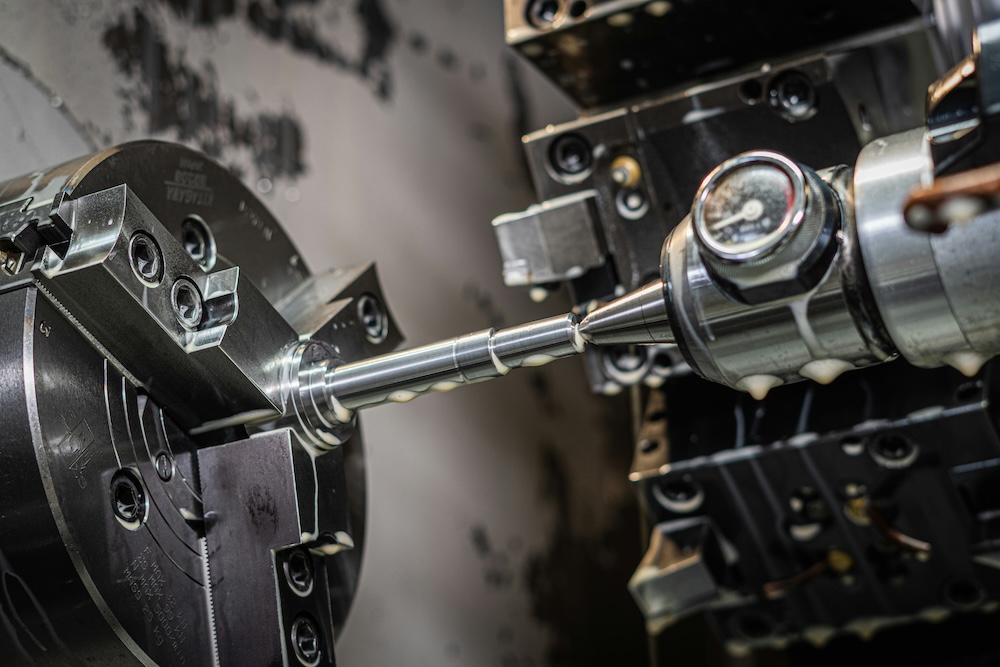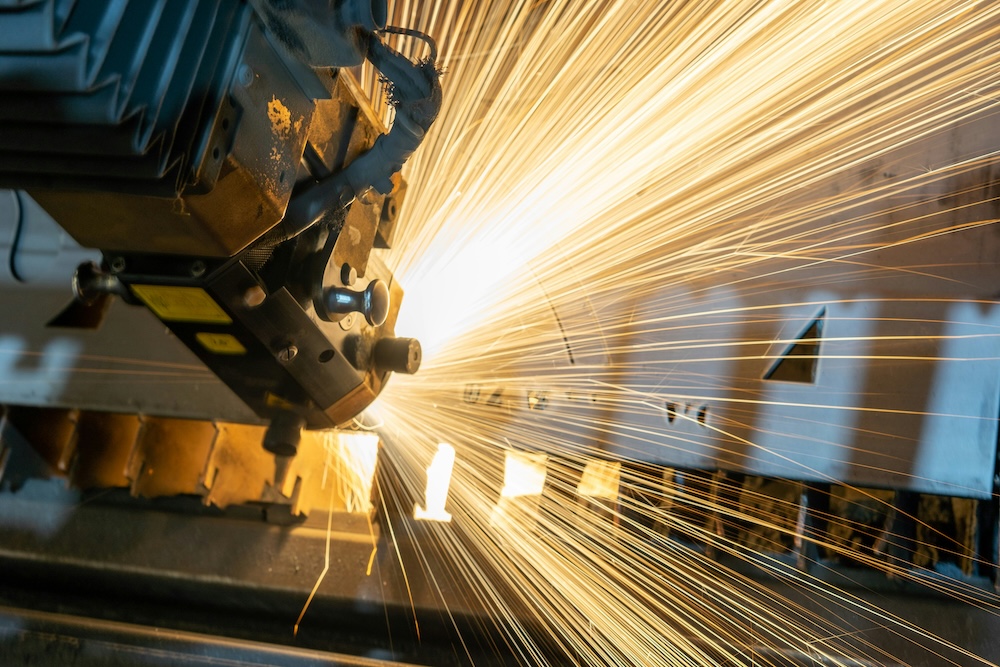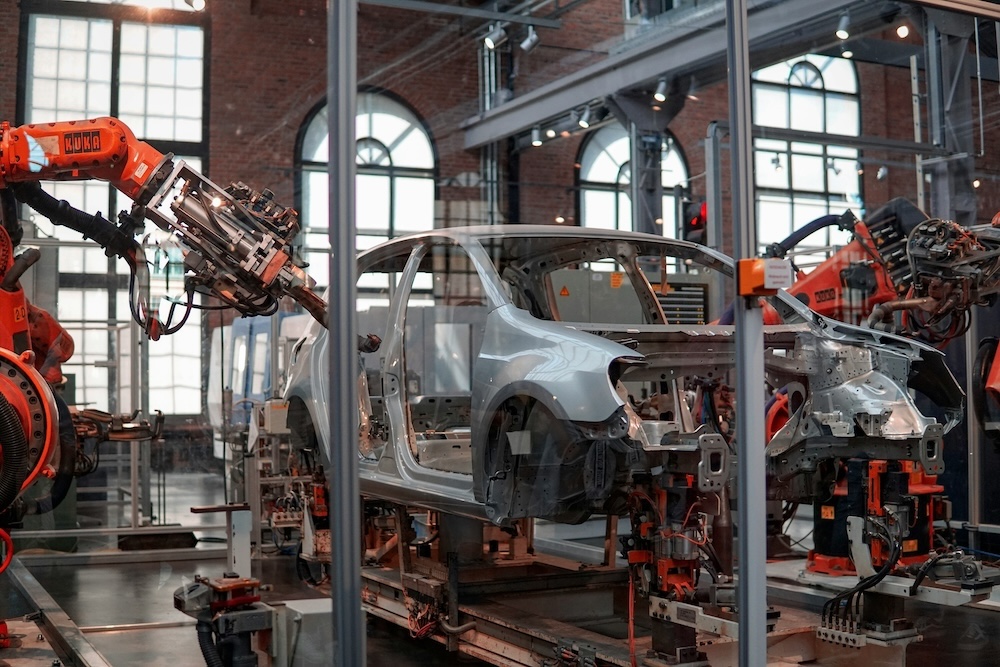A Computer Numerical Control (CNC) machine offers a treasure trove of possibilities and precision. And over the years, these machines have become increasingly advanced.
There’s much to learn — including its history, compatible materials, and integration with Computer-Aided Design (CAD) files and Computer-Aided Manufacturing (CAM) software.
So, to make the learning process a little more palatable, we’ve compiled some essentials into this short guide.

The process of CNC machining
CNC machining is a type of subtractive manufacturing, a process that involves chipping away at a block or rod of material to create a specific shape.
These machines operate with instructions similar to recipes in a cookbook — except the machines are computer-automated, and the instructions are coded and programmed, but you get the idea.
CNC machines are new and improved versions of traditional manufacturing machines. Instead of making components by hand, manufacturers can now let machines do most of the work. After entering the chosen design and the proper instructions, machines can craft multiple components repetitively and precisely.
When we examine this process, we are introduced to Computer-Aided Design (CAD) files and Computer-Aided Manufacturing (CAM) software. CAD files are usually the first port of call for CNC machining, as they allow the manufacturer to create comprehensive 3D designs. These files are then converted into a compatible format that the CNC machine can read. CAM software supplies the relevant G-code to bring the design to life, operating the machine by telling it what to do and how. The correct programming is vital here as it ensures the machine’s cutting tools operate seamlessly, crafting complex shapes and designs.
Once all the necessary data is entered, the CNC machine can start. With recent advancements in automation, many CNC machines can be left running for allotted periods of time, increasing productivity and limiting labour costs. It’s a win-win!
Specific post-processes and inspections follow the manufacturing process itself. These vary depending on the machine. When these are complete, the manufactured part can be cleared for distribution, and the process can be repeated.
A CNC machine’s impact on manufacturing
The earliest concepts for a CNC machine date back to the 1940s. The Second World War and the Second Industrial Revolution increased the demand for more complex machinery that crafted components to a higher quality and precision. Since then, CNC machines have been a mainstay of manufacturing.
Before CNC machines were created, there were three main manufacturing methods. These included manual machining, mechanical automation, and simple programmable machines such as Numerical Control (CNC). These methods were typically too slow, prone to errors, and limited in repeatability. Enter CNC machining.
With its high precision and efficiency, CNC machining has found a home across a wide range of industries. It has proven a vital tool for accurate, fast and consistent production in high-volume batches with the ease and repeatability that traditional manual manufacturing methods could never achieve. Since it is computer-automated, the risk of human error is also reduced, decreasing associated waste and increasing productivity.
It’s widely speculated that CNC machining will continue to shape the manufacturing world in the future, too. With consistent advancements in technology, including robotics and artificial intelligence (AI), there’s no doubt that we’ll be able to optimise the CNC manufacturing process and its products further. Whether it’s improved automation or greater precision, CNC machining is expected to meet ever-changing sector needs and demands.

Types of CNC machines
Different types of CNC machines are like various types of cars. There are many of them out there, and they all operate in a similar way, but they also have their own specialisms — like a hatchback’s fuel economy or an SUV’s space and height.
Common types of CNC machines include CNC lathes, CNC plasma cutters, CNC mills, CNC drills and more. Each machine has its own options for axes and positioning systems. They are typically categorised according to their design and function, material compatibility, and cutting tools.
Thanks to the variety of CNC machines, manufacturers have many choices. They can choose the best type of machine for the parts they want to make — usually depending on the part’s dimensions and geometric patterns — without any constraints on size and shape.
If you’re looking for a more in-depth exploration of the different types of CNC machines and their functions, our article here provides more information.
Flexibility and customisation
Another thing you should know about CNC machines is their customisation and flexibility.
It’s one of the many reasons why CNC machining services are so popular. Manufacturers can program different CNC machines to perform hyper-specific tasks, achieving complex shapes, geometries and intricate designs.
Whether a part requires drilling, cutting, or shaping, CNC machines are perfect for an assortment of uses and projects. They easily accommodate specific standards and tight tolerances, making them ideal for specialised items with a particular set of needs.
Applications of a CNC machine
When it comes to its applications, CNC machining is incredibly versatile.
CNC machines are critical for several industries, including oil and gas, marine, electronics, automotive, aerospace, and medical equipment. Without these machines, creating critical parts and components, such as valves and pumps, circuit boards and connectors, and surgical instruments and airfoils, would be more difficult.
Here at Sheldon Precision, we offer a CNC machining service that caters to a wide selection of applications and industries. These industries comprise hydraulics, instruments, automotive, MOD (defence), electrical, leisure, retail, oil and gas, and bespoke requests.

Let’s recap
CNC machining is a fundamental technology in modern manufacturing.
With its precision, accuracy and versatility, CNC machining offers a fantastic solution for a range of manufacturing needs. Now that we’ve covered the CNC manufacturing process, its effect on manufacturing, the types of machines available and its applications and customisation, you can harness its full potential.
Supporting UK businesses
Are you looking for support with your project? Sheldon Precision is here to help. With a full CNC manufacturing facility, we provide a premium service to exact customer specifications.
Contact us today for more information.

